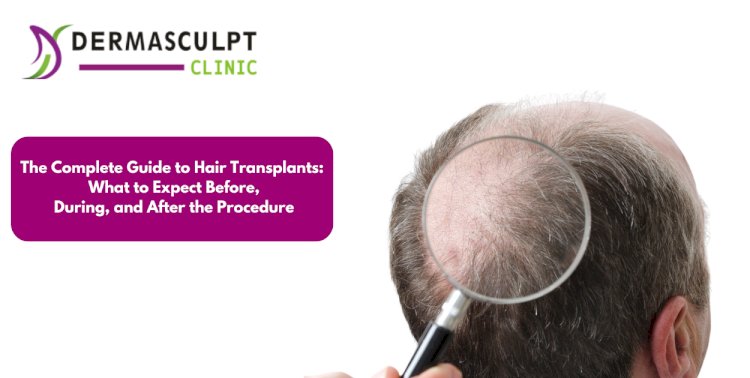The Complete Guide to Hair Transplants: What to Expect Before, During, and After the Procedure
The Complete Guide to Hair Transplants: What to Expect Before, During, and After the Procedure

The Complete Guide to Hair Transplants: What to Expect Before, During, and After the Procedure.
Hair loss can be a distressing experience for many individuals, impacting self-esteem and confidence. Fortunately, advancements in medical science have led to the development of hair transplant procedures, offering a permanent solution to hair restoration. If you're considering a hair transplant, it's crucial to understand the process thoroughly. This complete guide will walk you through what to expect before, during, and after the procedure.
Before the Procedure:
- Consultation and Assessment: The journey to a successful hair transplant begins with a consultation with a qualified and experienced surgeon. During this meeting, the surgeon will assess your hair loss pattern, donor hair availability, and overall health to determine if you are a suitable candidate for the procedure.
- Medical History and Pre-Op Instructions: You'll be required to provide your complete medical history, including any existing health conditions, medications, and allergies. The surgeon will also provide pre-operative instructions, which may include guidelines on medications, alcohol, and smoking cessation.
- Designing the Hairline: A critical aspect of the pre-operative phase is designing the hairline. Collaborate with your surgeon to ensure that the proposed hairline aligns with your expectations and facial features.
During the Procedure:
- Anesthesia and Harvesting: Hair transplant procedures are typically performed under local anesthesia to ensure minimal discomfort. The surgeon will then harvest hair follicles from the donor area, commonly located at the back of the head, using either follicular unit transplantation (FUT) or follicular unit extraction (FUE) techniques.
- Graft Preparation: Once harvested, the hair follicles are meticulously prepared for transplantation. The surgeon and the surgical team ensure the viability and health of each graft, optimizing the chances of successful transplantation.
- Recipient Site Creation and Graft Placement: The surgeon will create tiny incisions in the recipient area where the hair will be transplanted. Grafts are then delicately placed into these incisions, following the predetermined hairline design. The procedure's duration depends on the number of grafts and the complexity of the case.
After the Procedure:
- Immediate Post-Op Care: Following the surgery, you'll receive instructions on post-operative care. This may include guidelines on cleaning the recipient area, avoiding strenuous activities, and taking prescribed medications to prevent infection and aid healing.
- Recovery and Initial Shedding: Initial shedding of transplanted hair is a normal part of the recovery process. This occurs as the hair follicles adjust to their new environment. However, new hair growth will gradually replace the shed hair over the coming months.
- Long-Term Results and Maintenance: Patience is key when waiting for the final results of a hair transplant. Significant improvement is usually noticeable within six to twelve months. To maintain the results, follow-up appointments with your surgeon and adherence to post-operative care instructions are crucial.
Embarking on a hair transplant journey requires thorough understanding and commitment. From the initial consultation to post-operative care, each phase plays a vital role in the success of the procedure. By following this complete guide, you can confidently navigate the before, during, and after aspects of a hair transplant, ultimately reclaiming not just your hair but also your self-assurance.
Hair loss can affect both men and women. While genes play a vital role, there are usually other reasons as well, including, hormonal imbalances, an under-active thyroid gland, nutritional deficiencies and insufficient blood circulation in the scalp. Hair loss is a mammoth problem that many people are suffering from. There are lots of factors behind this hair fall problem.
What's Your Reaction?













